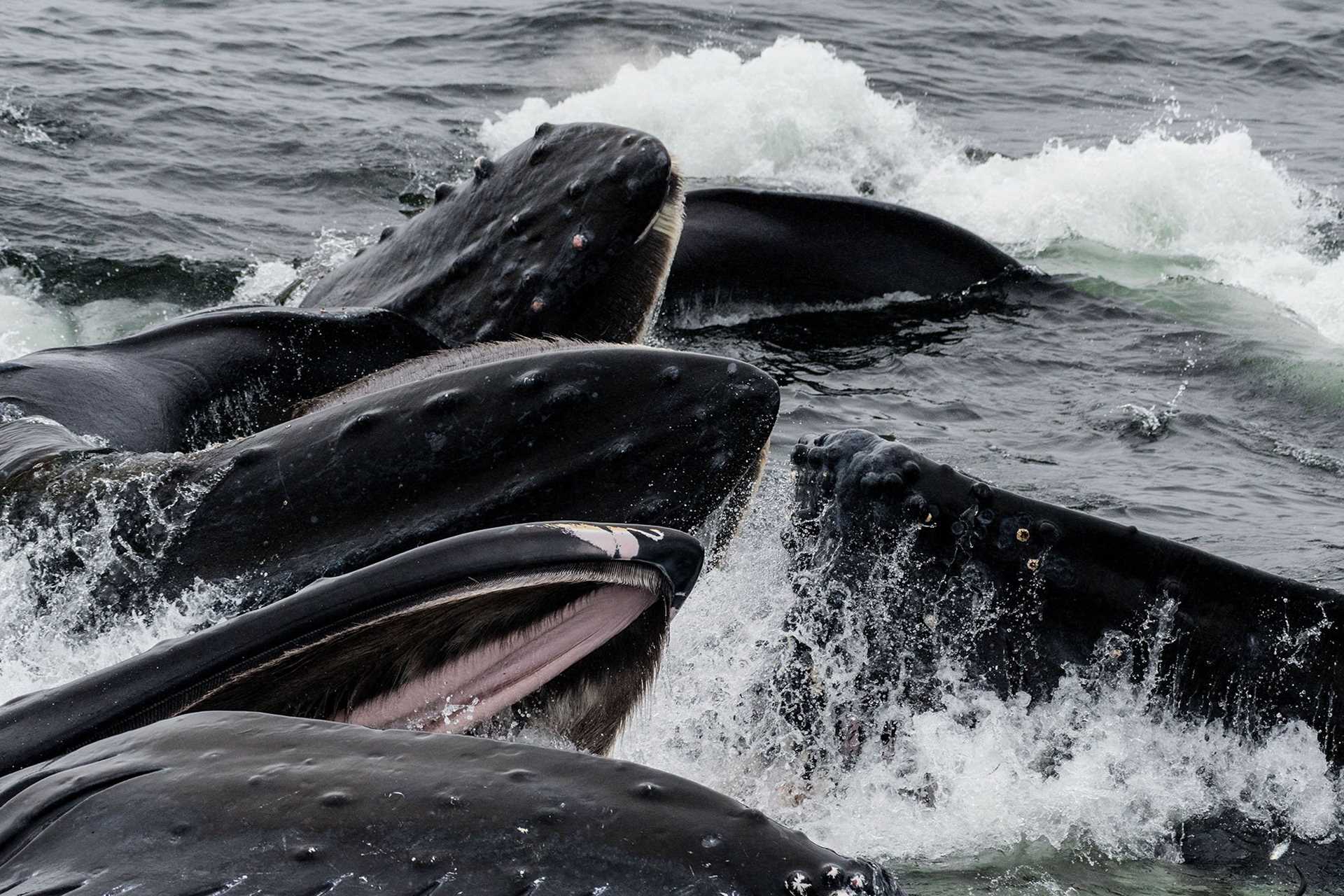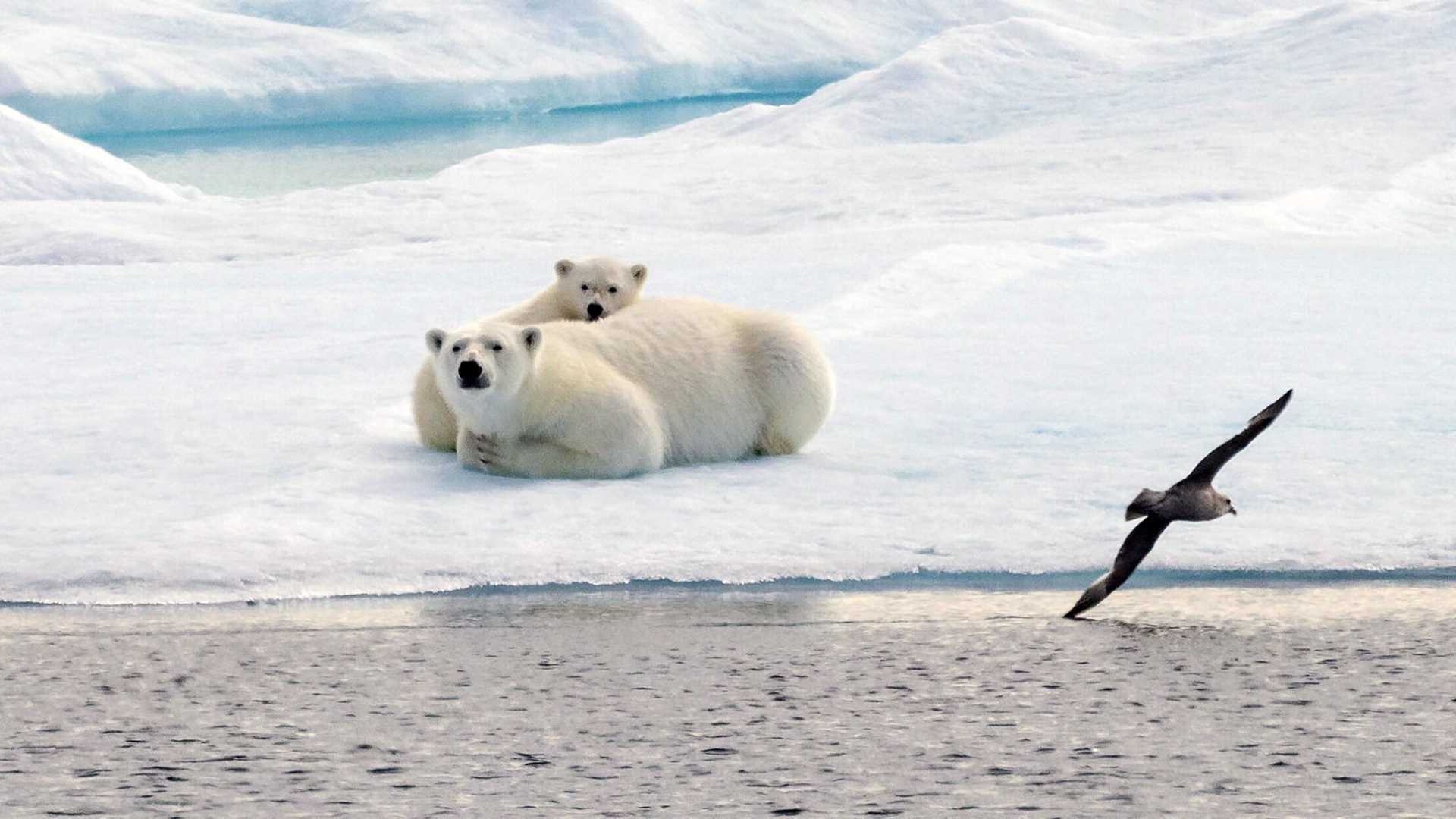Chatham Strait, Alaska
Exploring Alaska's Coastal Wilderness, July 20, 2022

It’s not every day you get a mouth view of a humpback whale. —Adam Ü, Naturalist
Santa Cruz Island, Galápagos
Wild Galápagos Escape, July 23, 2022

An unexpected guest aboard National Geographic Islander. —Cindy Manning, Expedition Leader
Flatey Island, Iceland
A Circumnavigation of Iceland, July 23, 2022

A puffin returning home with a bill-full of capelin to feed its single puffling. The puffling will be down a burrow, awaiting food deliveries. —Conor Ryan, Undersea Specialist
Floreana Island, Galápagos
Wild Galápagos Escape, July 24, 2022

Kayakers having a great time next to sea lions and flamingos on Floreana Island. —Ixora Berdonces, Naturalist
Somerset Island, Nunavut, Canada
Northwest Passage: Greenland to Alaska, July 25, 2022

Staff and crew are always looking out for wildlife from the bridge. Late in the afternoon, we were rewarded with a mother polar bear and one cub. They rested on the ice together until the cub climbed over its mother’s back, rolled around on the snow, curled back up against mum, and generally charmed us all. —Jennifer Kingsley, National Geographic Explorer (photo by Sue Forbes)
Isafjarðardjúp, Iceland
A Circumnavigation of Iceland, July 25, 2022

We looked for marine life and found several humpback whales shortly after leaving the dock. We had the opportunity to watch and take pictures of many individuals for a long time. Each time the whales showed their flukes in the air at the beginning of a deeper dive, cameras of all kinds captured the images as voices of all ages made all sorts of exclamations. Spending their summers busily feeding in Iceland, these humpback whales will eventually make their yearly migration south towards the Dominican Republic and the Caribbean to mate and give birth to the new generation. —Carlos Navarro, Undersea Specialist
Lake Eva, Alaska
Exploring Alaska's Coastal Wilderness, July 25, 2022

An aerial view of National Geographic Quest at anchor. The sea was calm, and the temperatures were mild for our morning walk to Lake Eva. —Sean Neilson, Naturalist
Espanola Island, Galápagos
Wild Galápagos Escape, July 25, 2022

Nesting Galápagos hawk with National Geographic Islander in the background. —Jonathan Aguas, Naturalist/Certified Photo Instructor
James Ross Strait, Nunavut, Canada
Northwest Passage: Greenland to Alaska, July 26, 2022

Along with around 30 guests onboard National Geographic Resolution, my day started as we witnessed the brilliance of the midnight Arctic sun. Guests were invited to come up to the top deck to experience the magical photographic light with National Geographic photographer Kilii Yuyan and photo instructor Michael Nolan. The images produced from this experience were phenomenal…creative angles, explosive light, and most of all, images that highlight the nature of this special place. —Tua Pittman, Cultural Specialist
Amazon Natural Park, Peru
Upper Amazon Aboard the Delfin II, July 25, 2022

The king vulture is the largest of the vultures, and they are respected by other species of vultures. For native people, the king vulture was considered the messenger of the gods. —Cristian Moreno, Undersea Specialist
Genovesa Island, Galápagos
Galápagos Aboard National Geographic Endeavour II, July 29, 2022

A baby red-footed booby sits on its nest while waiting for its parents to come back with seafood. —Walter Perez, Naturalist/Certified Photo Instructor
Pacaya Samiria National Reserve, Peru
Upper Amazon Aboard the Delfin II, July 29, 2022

Neotropical cormorants take short dives to catch their prey. Once caught, they make a short flight to a secure area where they can then swallow their catch. —Cristian Moreno, Undersea Specialist
Cambridge Bay, Nunavut, Canada
Northwest Passage: Greenland to Alaska, July 31, 2022

Cambridge Bay Heritage Center. —Kevin Rattue, Naturalist
Chinese Hat, Galápagos
Wild Galápagos Escape, July 29, 2022

Galápagos hawks suddenly appeared in the air. They are the most majestic birds in the islands, located at the top of the food chain. These incredible raptors became endemic to Galápagos and prefer a diet of marine iguanas and various small creatures, such as lizards, snakes, and seabirds. —Christian Saa, Naturalist/Certified Photo Instructor
Rabida Island, Galápagos
Galápagos Aboard National Geographic Endeavour II, July 31, 2022

Flamingos interacting after a courtship display. —Ramiro Adrian, Naturalist
At Sea
Northwest Passage: Greenland to Alaska, August 2, 2022

A young female bear, curious and fearless, stares up at guests aboard National Geographic Resolution. This was...likely a bear whose mother had recently sent it off to make its way in the world. Such bears can be trouble because they haven’t yet perfected their hunting skills and they haven’t always learned to avoid humans. She approached the ship with no hesitation, showing none of the signs of anxiety or wariness we saw in the older male bear earlier in the day. Her biggest concern seemed to be whether she would be able to board the ship to investigate those intriguing smells. —Daniel Odess, Cultural Specialist




